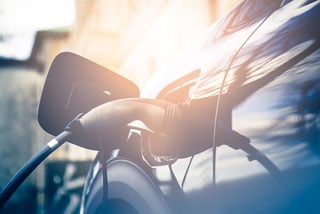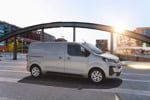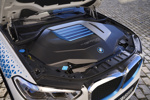Air quality issues across Europe will prove to be a game-changer for electric vehicles (EVs), according to Nissan.
Governments are looking at how they can mitigate the harmful effects of exhaust emissions, which include nitrogen oxide (NOx) and particulate matter (PM10).
In the UK, London will launch the world’s first ultra-low emission zone (ULEZ) in 2020, requiring vehicles travelling in the congestion zone to meet new emission standards or pay a daily charge.
And, with other cities expected to follow London’s lead, Nissan EV director, Jean-Pierre Diernaz told Fleet News it will help drive the uptake of plug-in vehicles.
“Every single city is looking at something, whether now or in the near future, in terms of ultra-low emission zones,” he said. “This will be a massive problem for companies making deliveries in these cities and their solution will be e-mobility.”
Diernaz also argues that the potential impact on an individual’s health, rather than established concerns over global warming, will persuade more people and businesses to consider EVs.
He explained: “When you say it’s about the air quality for your kids then it’s a different story.
“Last year, we experienced some pollution days where cars were forbidden for two days in Paris. During these two days, we saw the number of visitors to our website, the number of test drive requests and visits to our showrooms peak like never .”
Nissan, which launched the Leaf in 2010 and its electric van the e-NV200 last year, will hope to take advantage. But it says the incentives provided by governments both here and abroad will continue to prove key to wider adoption.
The UK Government is currently reviewing its plug-in grant for cars and vans, and Diernaz says the support it offers through infrastructure, tax incentives and grants are seen as the benchmark for other European countries.
A long-term view is also important, according to Diernaz. He said: “It’s critical to reassure companies that to buy an electric car or van those incentives will remain during the entire ownership period. The grant is important, but consistency is crucial.”
Nissan’s comments come as figures from the Society of Motor Manufacturers and Traders (SMMT) show that 11,842 ultra-low emission vehicles (ULEVs) were registered between January and May – a four-fold rise on the 2,838 registrations in the same period last year, albeit just of total new car registrations.
The growth is further evidence of an increasing awareness of the significant benefits of driving a ULEV along with an ever increasing choice of vehicles, says the SMMT.
Mike Hawes, SMMT chief executive, said, “The remarkable growth in demand for plug-in vehicles is expected to continue as the range of ultra-low emission vehicles on sale increases.”
Fleets can now choose from a diverse range of around 20 ULEVs, compared to just six in 2011.
The figures were welcomed by transport minister Andrew Jones, who paid tribute to the Government’s Go Ultra Low campaign, which is helping drive the uptake of ULEVs.
He said: “I am delighted to see such a huge rise in the number of people buying ultra-low emission vehicles.
“The Go Ultra Low campaign is making low emission vehicles an increasingly popular choice and the Government is investing £500 million over the next five years in making them more accessible to families and businesses across the country.”
























Login to comment
Comments
No comments have been made yet.